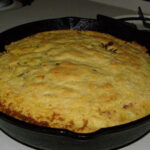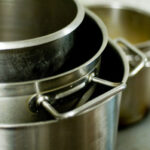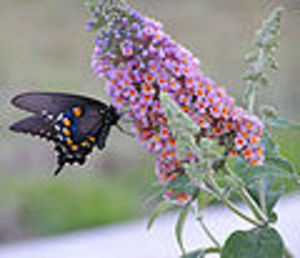I decided to write this for myself as well as for you. For years I’ve gotten confused as to the best material that cookware should be made of. I wanted the safest materials. I’d go to the store and call my daughter to remind me what kind of fry pan to buy. Over the years I’ve learned a lot. The choices boil down to copper, aluminum, stainless steel, Teflon type products and cast iron. There are pros and cons to these but in my mind some are better than others for the reasons I will describe.
Cast Iron: I have a couple of cast iron products. This has been used for hundreds of years because it is so strong and durable. If you’ve ever picked up a cast iron fry pan you will find it heavier than other materials. I talk about fry pans because I have found cast iron to be great for frying though they also are very good for baking.
Compared to other materials cast iron is less expensive. If you’ve been shopping lately you may be a victim of sticker shock! You can spend hundreds of dollars on one piece of cooking equipment. I found a cast iron skillet on line in the $20 range.
You will see pans that say they are pre-seasoned. New cast-iron pans have a protective coating on them that have to be removed by scrubbing it. If you find that your pan is rusting it means it wasn’t seasoned correctly. Seasoning cast iron is what makes them non-stick. There is a process you will go through to season it but basically you will be rubbing in a coat of vegetable oil put it in the oven upside down on about 400 degrees for up to one hour. Every time you cook in your cast iron pan you are seasoning it.
Cast iron holds heat for a longer time than other material meaning the eggs in the pan should cook evenly.
Safety issues: Cast iron will give you iron as a nutrient however it may contain more iron than you need if they are not seasoned so that’s another reason to make sure your cast iron is seasoned. Cast iron is considered a safe product to use and my choice in spite of having to wash it gently and dry it.
Stainless Steel: Stainless steel is actually a conglomeration of many ingredients including the main ingredient, iron as well as copper, nickel, titanium and the most important chromium.
You will probably find that the pan is actually made of aluminum with the cooking surface made of stainless steel. Aluminum is considered to be unsafe to cook in.
It’s strong and doesn’t scratch easily. It isn’t going to rust like cast iron will. It requires less maintenance. It can be inexpensive but like any product the high end brand names are expensive.
It’s one of the most hygienic of the materials since it has no pores in which bacteria can hide.
Unlike cast iron stainless steel doesn’t heat up as evenly. You may see stainless steel pans with a copper or aluminum bottoms. That is done to help heat the pan more evenly.
Safety issues: Although stainless steel may be one of the safest choices, if you are allergic to nickel stay away from it!
Aluminum is sometimes used as a layer in the bottom of stainless steel pans because of its great ability to conduct heat. It’s fairly inexpensive but it can react to some foods and change the food’s taste another reason you might find the aluminum between something like stainless steel.
Since aluminum is a soft metal it will dent and get dings in it.
Safety issues: I had a very hard time understanding and remembering what I learned about aluminum but now stay clear of it. As I said above it is reactive and when some foods react with the metal there’s some thought, though nothing definitive that I could find, that there’s an association with aluminum and Alzheimer’s. If you use it make sure it’s in good condition.
Copper is considered the best material with which to cook because it’s great as a conductor of heat. However you’ll find copper cookware with stainless steel bottoms because the copper can transmit a reaction to the food you are cooking.
Copper can’t go in the dishwasher and although it’s really pretty it takes some work to keep it that way. If you are like I am and just let things air dry you’ll get spots!
Safety: The combination of stainless steel and copper is the way to go. Since as I said you’ll find stainless steel at the bottom the copper can’t come into contact with food. However copper is also not for people with nickel allergies. Don’t use uncoated copper and be careful not to use anything abrasive to clean it because the protective layer can come off.
Teflon, I believe this substance is toxic. It’s non-stick so it’s really easy to use and to clean however it scratches easily. I know I’ve seen pieces of what is plastic when I’ve cleaned my Teflon. This is getting into my food. Using Teflon over high heat is really bad so if you have Teflon just use it on a low heat setting.
DuPont studies show that Teflon gases are toxic and if you have a bird the fume are hazardous to them! Teflon pans release at least six toxic gases, including two carcinogens. DuPont acknowledges that the fumes can sicken people, a condition called “polymer fume fever.”
A study by Environmental Working Group, in collaboration with Commonweal in 2005 found chemicals in the umbilical cord blood of US-born infants including the Teflon chemical PFOA. Researches at John Hopkins Hospital released their finding in 2006 showing the same results. The Canadian government is introducing legislation to ban PFOA. http://www.eartheasy.com/article_teflon_toxicity.htm
On the Dupont website I found “The fumes that are released by overheated polymer can produce symptoms referred to as “polymer fume fever” – flu-like symptoms that are relatively quickly reversed in humans but can be fatal to the very sensitive respiratory systems of birds. Over the past 40 years, there is only one published account of a minor health effect, reversible flu-like symptoms, as a result of severely overheating non-stick cookware. Butter, fats, and cooking oils will begin to smoke at approximately 400°F (204°C), producing fumes that can irritate eyes, nose and throat and possibly cause respiratory distress.” The website goes on to say that Teflon is safe. I don’t know about you but I am avoiding it.
SOURCE: http://www.fantes.com/stainless_steel.htm
SOURCR: http://school-for-champions.com/health/cooking_surfaces.htm
SOURCE: www.eartheasy.com
SOURCE: www.dupont.com



